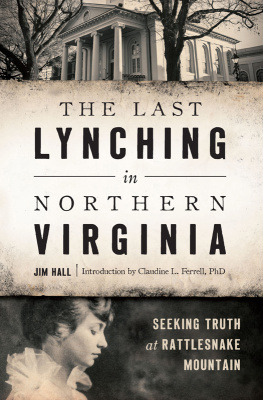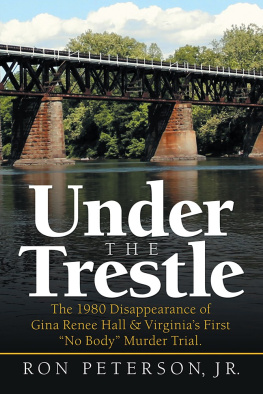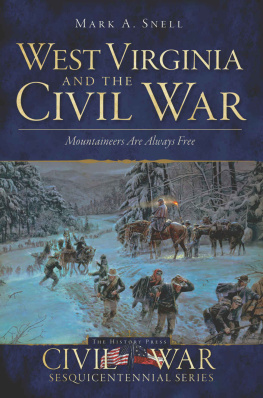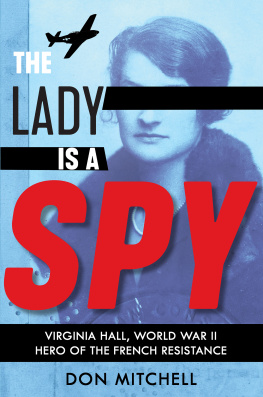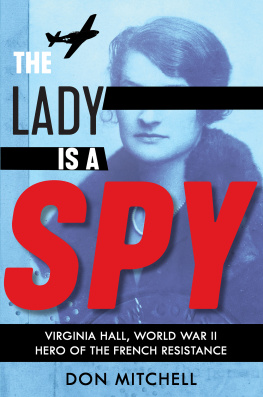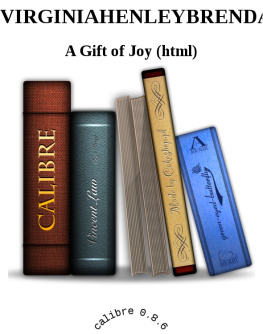ACKNOWLEDGEMENTS
This book would not have been possible without the cooperation of the people of Fauquier County. Many were hesitant to talk about what happened there in 1932. Several questioned why I would bring up so unpleasant a topic, and they did not want to be associated with the project. It was as if the attack on the Baxleys and the death of Shedrick Thompson had occurred yesterday, not eighty-four years ago, so fresh were the feelings that surrounded the event. Even so, many residents wanted to talk about what happened and agreed to share their memories, photos, records and time. To them, I say thank you very much. These included Alphonso Washington, Sylvia Gaskins, the late Melvin Poe, Jeff Urbanski, Henry Green, Reverend Lindsay Green, Reverend William Gibbs, Reverend Allen Baltimore, Dorothy Showers, Mary and Barbara Herrell, Sam Poles, Chaz Green, Carol Scott, Doug Hume, Hubie Gilkey and Michel Heitstuman.
Of all the people in Fauquier, no one was more vital to the completion of this story than Henry Baxley Jr., who was an infant at Edenhurst with his parents the night they were attacked. The attack was a painful family memory and little discussed. Even so, Mr. Baxley was available on several occasions to talk about the incident, to visit locations important to the story and to introduce me to others. His knowledge, patience and generosity were unmatched. My copy of his self-published family history, The Cove Remembered, is filled with marginal notes, underlined sentences and highlighted passages. One paragraph at the start of the book gives insight into the kind of man Mr. Baxley is. He wrote, There is no copyright for this book. The author would be tickled to death to have any or all of it copied to any extent.
I am also grateful for the support of my former colleagues at the Free Lance- Star newspaper. These include Brian Baer, Kristin Davis, Rusty Dennen, Cathy Dyson, Bill Freehling, Edie Gross, Rob Hedelt, David Lyne, Nancy Moore, Susan Morgan, Howard Owen, Karen Owen, Suzanne Rossi, Neva Trenis and Lee Woolf. They read early versions of the story, shared their knowledge, helped in my research, showed interest in the project over many months and encouraged me when I encountered setbacks.
I feel lucky to have received valuable help from Claudine Ferrell at the University of Mary Washington; Peter Wallenstein at Virginia Tech; Art Tracy, retired from the University of Mary Washington; and William Freehling, retired from the University of Virginia. These scholars responded to my queries, read early drafts of the book and offered encouragement and advice. What amazed me was that I was a stranger to all but Tracy. Ferrell offered suggestions about the structure of the book and wrote the foreword.
Endless thanks also go to Teresa Reynolds at the Fauquier History Museum at the Old Jail; Karen White at the Afro-American Historical Association of Fauquier County; Jack Bales, reference and humanities librarian at the University of Mary Washington; and the librarians at the Fauquier County Public Library, the Prince William Public Library System, the Central Rappahannock Regional Library and the Albert and Shirley Small Special Collections Library at the University of Virginia. Historians John Toler, Erik Nelson and Robert Dalessandro gave generously of their time and knowledge, as did Roger Engels, editor Laura Mathews, author Paul Metzger and former newspaper publisher Bo Jones. The suggestions offered by Dr. Wayland Marks, a Fredericksburg geriatrician, after he read an early draft were more helpful than he realizes.
Its also no exaggeration to say that The Last Lynching in Northern Virginia wouldnt be the book it is without the efforts of Tom Davenport and his colleagues Shawn Nicholls and Dylan Nicholls. Tom is a resident of Fauquier County, an award-winning filmmaker and founder of Folkstreams, an online collection of documentary films. Tom was long interested in the Thompson case and contacted me in 2013 about working together. The result was a collaboration that continues to this day. On countless occasions, Tom, Shawn, Dylan and I formed a caravan, traveling the roads of Fauquier from one filmed interview to the next. I look forward to seeing Toms film about the Thompson case later this year.
I also feel lucky to have had the support of my family, especially my brothers Doug Hall and Bernie Hall, who were early readers of the manuscript. As I told them, I wish our parents were still alive so I could share this work with them.
And finally, my fiance, Laura Moyer, deserves far more thanks than I can convey here. She listened patiently to my ramblings, offered countless bits of advice and read these pages as often and as carefully as I did. It would be impossible to count all the improvements that she suggested or measure the value of her support. Thank you, Laura.
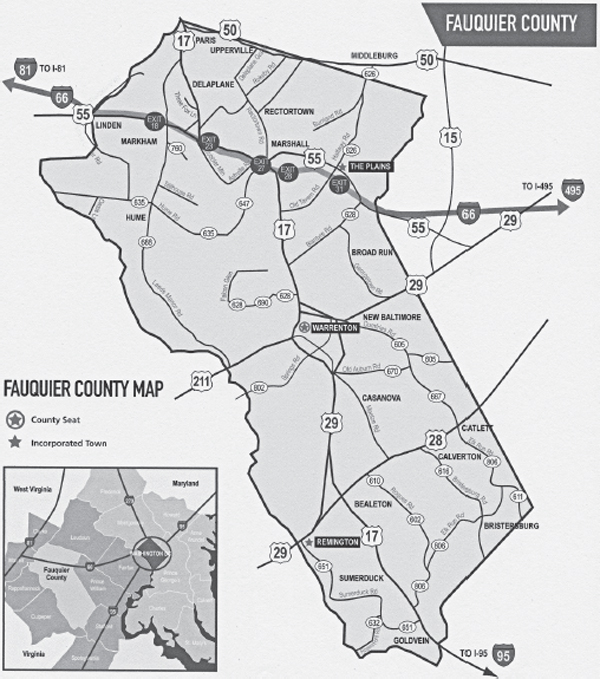
Fauquier County, Virginia. Courtesy of Fauquier County Department of Economic Development.
A body had been found. It hung from an apple tree at the foot of Rattlesnake Mountain. By the time Deputy W.W. Pearson got there, a crowd had gatheredmore than 150 people. Someone set fire to the body, and Pearson tried to beat back the flames with his new hat. Then a man punched a pistol in his ribs. Get back, the man said. Let it burn.
ABOUT THE AUTHOR

Authors collection.
Jim Hall was born in Washington, D.C., and grew up in Falls Church, Virginia. He received a bachelors degree from Virginia Tech in Blacksburg, Virginia, and a masters degree from Virginia Commonwealth University in Richmond, Virginia. He lives now in Fredericksburg, Virginia. His thirty-six-year newspaper career included stints as a reporter and editor, first at the Caroline Progress, a weekly in Bowling Green, Virginia, and then at the Free Lance-Star, a daily in Fredericksburg. He retired in 2013.
Hall is the father of two sons. He is also a certified emergency medical technician. He enjoys finding a new bakery and wasting entire evenings during the summer watching Washington Nationals games.
BIBLIOGRAPHY
ARTICLES
Beers, Paul G. The Wythe County Lynching of Raymond Bird: Progressivism vs. Mob Violence in the 1920s. Appalachian Journal (Fall 1994): 34.
Dabney, Virginius. Dixie Rejects Lynching. Nation (November 27, 1937).
Davis, David A. Not Only War Is Hell: World War I and African-American Lynch Narratives. African-American Review (Fall/Winter 2008): 477.
Du Bois, W.E.B. The Returning Soldier. The Crisis (May 1919).
Funkhouser, Celina, Richard Marshall and Jim Matthews. Black Narratives in Fauquier County. Anthropology 147 (1973): 31. University of Virginia, Library Accession no. 10493, Box 8.
Kuznets, Simon. National Income, 19291932. National Bureau of Economic Research, June 1934.
Roshnavand, Farshid Nowrouzi, and Rajabali Askarzadeh Torghabeh. African Americans and the Reconceptualization of Identity: Black Participation in World War I and the Rise of the New Negro Consciousness. Khazar Journal of Humanities and Social Sciences 16 (2013): 37.
Rumph, Marylin. The Last Mob Lynching in Fauquier County. Fauquier (Spring 1994).
Schick, Kurt. Slavery in Fauquier County. News and Notes from the Fauquier Historical Society (Fall 1983).
Smith, J. Douglas Smith. Anti-Lynching Law of 1928. Encyclopedia of Virginia.http://www.encyclopediavirginia.org/Antilynching_Law_ of_1928#start_entry.
Toler, John T. Fauquier County in World War I.
Next page
